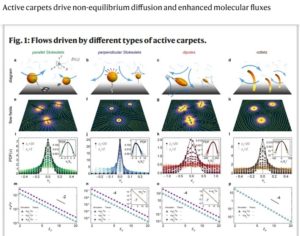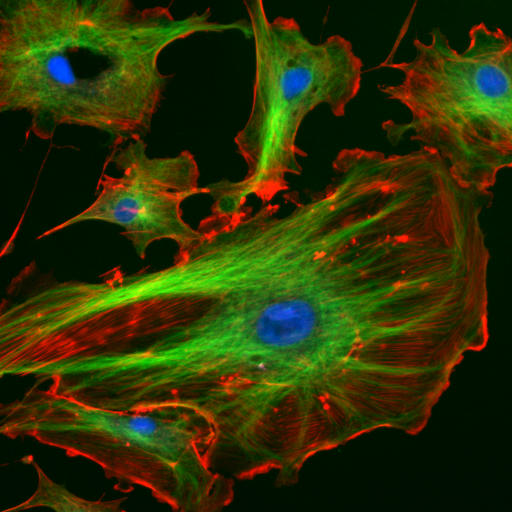An investigation of the Millennium Nucleus Physics of Active Matter (University of Chile),
Pennsylvania University, and Heinrich Heine University Düsseldorf could help to: comprehend
multiple biological processes, fight microplastics in the ocean, and eliminate pathogens -like Covid 19- from the lungs.
Molecular diffusion is a physical process that consists of the motion of atoms and particles from a high concentration region to another with less concentration until achieving a uniform
distribution. This process is present day by day in our lives. For example, when we left a tea bag in hot water, we can see how the tea gets mixed with the water. The same occurs at a microscopic level and complex systems, like living organisms, play a vital role in diverse processes in which there are many unsolved questions.
In a study published in Nature Communications -performed by physicists of the Universities of
Chile, Pennsylvania, and Düsseldorf- they talk about the creation of a new mathematical model able to predict how this particles transport occur in living organisms, which could have important implications in medicine, biotechnology and the understanding of how to eliminate pathogens from the lungs. “Inside the human body, we have lots of processes occurring at a microscale in which extensive portions of our organs have a cilia coverage that gets agitated to transport particles. We found a mathematical expression to describe these transport processes”, explains Francisca Guzmán, researcher of the Millennial Nucleus Physics of the Active Matter, from the DFI-FCFM of the University of Chile, Academic of Universidad Mayor, and principal author of this study.
Finding
“Diffusion is one of the most important forms of motion of little molecules inside the body, but as stuff that is needed to make the transportation possible gets bigger, like proteins or cells, standard diffusion gets too slow to keep them moving. There is when active components are needed to help to transport things.” Explains the co-author of this study and researcher of the University of Pennsylvania, Arnold Mathijssen.
In biology, these components are known as “active carpets”; structures like cytoskeletons, flagella, or cilia that add small amounts of energy to a system to make diffusion more efficient.
Thanks to the mathematical model, scientists discovered that in these active carpets diffusion
processes, there are small fluctuations at the nanoscale that reveal, for example, how a bacterium can move a molecule.
They were also able to observe that motion of the active particles is not random, as occurs in the diffusion of inactive particles, in which the Brownian or aleatory movement governs. Therefore, it is a movement that could be predicted.
Results also reveal that active particles include a natural cleaning system of its cilia to make
vertical diffusion more efficient. “To know the exact form of how the active carpets affect the transport and diffusion processes at the microscale, can allow us to understand, for example, the importance of the presence of cilia in the digestive or respiratory tracts… Maintaining their good health allows them to stay clean. A knowledge that can be applied in another kind of biofilms or artificial material that is covered by active matter and suffer these processes of self-cleaning" says Guzmán.
Mathijssen, who also participates in a project related to the propagation of Covid-19, adds that cilia in the lungs are an important example of active carpets in biology, especially because they serve as the first line of defense against pathogens like Covid-19.
“It would be very important to prove if this theory of the active carpets it is linked to the theory of elimination of pathogens from the airway”, says.
While Guzmán adds that, thanks to these findings, another possible area of investigation is to
analyze how seaweed films affect the vertical mixture of microplastics in the ocean.
 Read paper here: http://Lee el paper completo aquí: https://www.nature.com/articles/s41467-021-22029-y
Read paper here: http://Lee el paper completo aquí: https://www.nature.com/articles/s41467-021-22029-y


